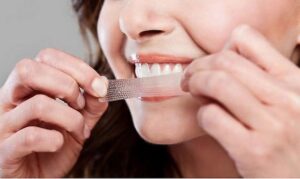The quest for a straighter smile frequently leads to the decision between traditional braces and Invisalign. In St Petersburg, people looking for orthodontic solutions are given these two distinct paths, each with its advantages and considerations. This comprehensive guide navigates the terrain of Invisalign and traditional braces, investigating the differences, benefits, and factors to consider while concluding which orthodontic option aligns best with individual necessities.
Understanding Invisalign And Traditional Braces
Invisalign: A Modern Approach To Orthodontics
Invisalign addresses a cutting edge, careful option in contrast to conventional braces. This framework utilizes a progression of clear, specially designed aligners that steadily shift teeth into the ideal position. The aligners are removable, making them advantageous for eating, brushing, and flossing. Invisalign is prestigious for its stylish allure, as the aligners are almost undetectable, permitting people to go through orthodontic treatment without the observable presence of metal braces.
Traditional Braces: Time-Tested Orthodontic Solution
Traditional braces have been a staple in orthodontics for quite a long time. This framework includes metal brackets appended to every tooth, associated by wires and groups. The pressure made by the wires step by step directs teeth into arrangement. While the presence of traditional braces is perceptible, headways in design and materials have made them more agreeable and proficient.
The Advantages Of Invisalign
1. Aesthetic Appeal:
The primary advantage of Invisalign lies in its almost undetectable appearance. The clear aligners offer a discreet orthodontic solution, making it an alluring choice for people who are cognizant about their appearance during treatment.
2. Removability:
Invisalign aligners are removable, permitting people to take them out for eating, brushing, and flossing. This element improves oral hygiene and removes dietary restrictions related to traditional braces.
3. Comfort:
The absence of metal wires and brackets adds to a more agreeable orthodontic experience. Invisalign aligners are produced using smooth, agreeable materials, decreasing the probability of oral irritation and soreness.
4. Predictable Treatment Plan:
Invisalign treatment includes a progression of custom-made aligners, each well used for a predefined period before progressing to the following set. This precision considers a predictable treatment plan, with people knowing ahead of time the way that their grin will develop throughout the interaction.
5. Speech:
Invisalign aligners ordinarily negligibly affect discourse, making it a convenient decision for people who need to impart plainly in professional and social settings.
The Strengths Of Traditional Braces
1. Comprehensive Correction:
Traditional braces are exceptionally viable for correcting many orthodontic issues, including extreme misalignments, complex bite problems, and overcrowding.
2. Cost-Effective:
In comparison to Invisalign, traditional braces are in many cases more cost-effective. This settles on them a reasonable decision for individuals who prioritize budget considerations.
3. No Compliance Concerns:
In contrast to Invisalign, where consistency with wearing aligners is critical for success, traditional braces are attached to the teeth, disposing of the requirement for people to wear or remove them.
4. Shorter Treatment Time For Some Cases:
In specific cases, traditional braces might accomplish results more rapidly than Invisalign. The proper idea of braces considers persistent tooth movement, possibly reducing treatment time.
Factors To Consider In Choosing Between Invisalign And Traditional Braces
1. Orthodontic Needs:
The nature and severity of orthodontic issues assume a huge part in deciding the most suitable treatment. While Invisalign is successful for some cases, traditional braces might be suggested for additional complicated or extreme misalignments.
2. Aesthetic Preferences:
People with areas of strength for a discreet orthodontic solution might incline towards Invisalign, while those less worried about appearance might view traditional braces as a reasonable choice.
3. Lifestyle Considerations:
The flexibility of Invisalign aligners requests to people with active lifestyles or the individuals who favor the convenience of removable orthodontic appliances. Then again, the people who lean toward a fixed treatment option might pick traditional braces.
4. Budget:
Financial considerations assume a huge part in the decision-making process. While Invisalign might have a higher initial cost, traditional braces might be a more budget-friendly option for certain people.
5. Compliance And Responsibility:
Accomplishment with Invisalign relies upon consistent wear of the aligners as endorsed by the orthodontist. People should be dependable and focused on following the treatment plan for optimal results.
6. Age:
Invisalign is often favored for grown-ups and more seasoned teens because of its tasteful allure and solace. Traditional braces might be suggested for youngsters or people with explicit orthodontic necessities.
The choice among Invisalign and traditional braces is multi-layered, relying on private inclinations, way of life contemplations, and orthodontic necessities. Investigating the advantages and factors engages people to make informed decisions custom fitted to their special conditions. Whether the charm of clear aligners beckons or the dependability of traditional braces is liked, the excursion to a straighter smile starts with understanding the particular benefits every choice brings to the orthodontic table.






